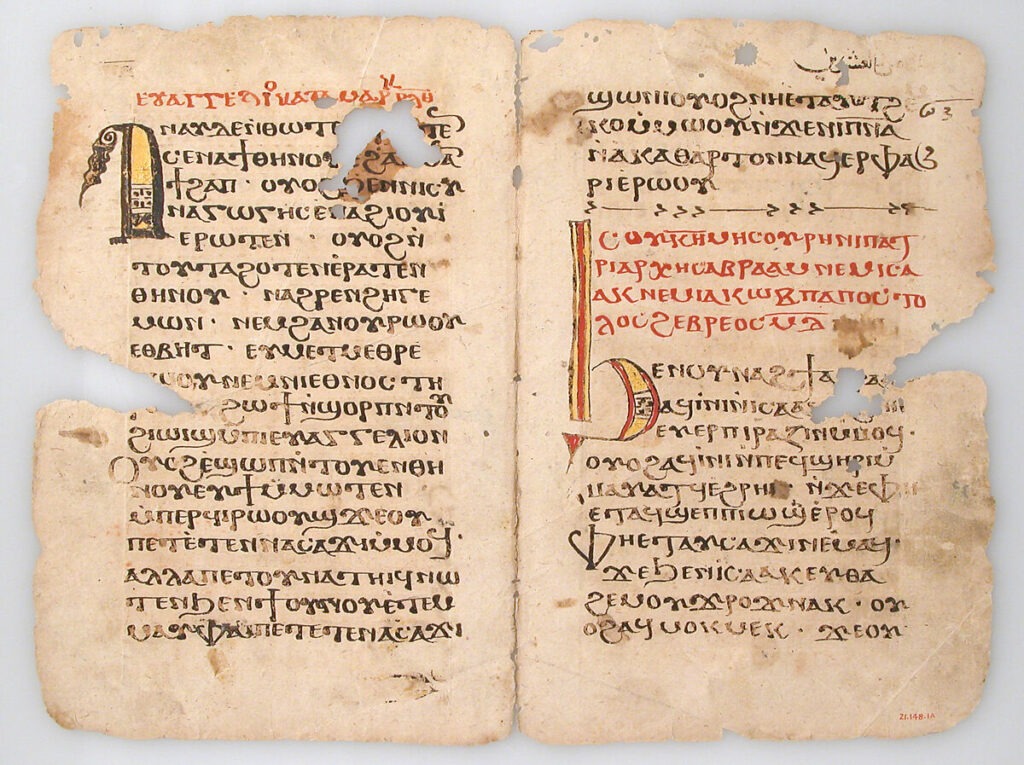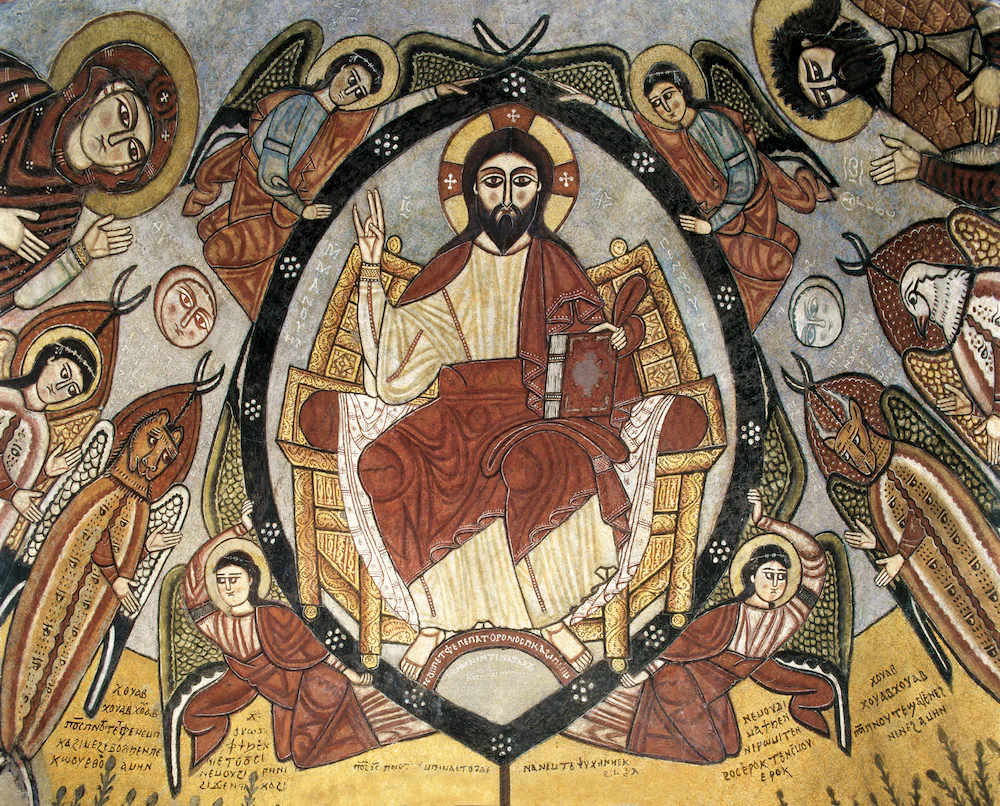This vocation of folly for Christ's sake is not limited only to Russia, but is also a characteristic of Greek and Syriac Christianity from the fourth century onwards. Holy fools are to be found likewise in the Christian West. One of the earliest examples in Eastern Christendom—perhaps the earliest of all—is not a man but …
This vocation of folly for Christ’s sake is not limited only to Russia, but is also a characteristic of Greek and Syriac Christianity from the fourth century onwards. Holy fools are to be found likewise in the Christian West. One of the earliest examples in Eastern Christendom—perhaps the earliest of all—is not a man but a woman: the unnamed nun described by Palladius in the Lausiac History, who lived in Upper Egypt at a women’s community under the Pachomian rule in the late fourth century. Feigning madness, she worked in the kitchen, with rags wrapped round her head instead of the monastic cowl. She undertook the most menial tasks and was treated with general contempt, kicked and insulted by the other nuns. One day the renowned ascetic Pitiroum visited the community. To the consternation of everyone he knelt at her feet and asked for a blessing. “She is mad,” the nuns protested. “It’s you who are mad,” retorted Pitiroum. “She is our amma [spiritual mother], mine and yours.” A few days later, to avoid the honors she was now receiving, the nun disappeared and was never heard of again. “And where she went,” Palladius adds, “or where she disappeared to, or how she died, no one knows.” He seems to be ignorant even of her name.
Now we pose the question, must the madness of the fool in Christ be always feigned and deliberate, or may it be sometimes a genuine instance of mental illness? The question assumes that there is a clear differentiation between sanity and insanity; but is this always the case? In labeling some persons “normal” and others “abnormal,” are we not assuming—perhaps without good reason—that we know exactly what “normality” is? But, insofar as a distinction is to be made, then it can be argued that in principle the madness of the fool must necessarily be feigned; only so can it be regarded as freely chosen folly for Christ’s sake, and not just an involuntary affliction. Yet in practice it is less easy to impose rigid lines of demarcation. But in other instances the evidence is less easy to interpret, some of the Russian fools seem to be truly deranged. Alongside those who are consciously playing a part, so it seems, some place should also be found for holy fools who are involuntarily subject to psychic maladies. Is it not possible that the grace of Christ may likewise be at work among them? A man or woman may be psychologically ill, and yet spiritually well; mentally sick, but of deep moral purity. Such persons may surely be included among the holy fools, and may be seen as inspired by God to fulfill a prophetic role.
For the prophet is not always consciously aware of what he is saying. As the Fourth Gospel states of Caiaphas: “Now this he did not say on his own authority; but being high priest that year he prophesied that Jesus would die for the nation” (Jn 2: 51). Caiaphas is an unwitting and involuntary prophet: he does not appreciate, with his conscious mind, the real meaning of the truth that he proclaims, but he says more than he intends or realizes. If God, without depriving the prophet of his free will, may yet use him as the mouthpiece of a message greater than his own understanding, cannot the same be true also of the holy fool? Even when actually unbalanced on the psychological level, his mental disabilities may yet be employed by the Holy Spirit as a way of healing and saving others.
A feature of the fool’s vocation is the desire to preserve humility, the willing acceptance of humiliation. There is, however, a deeper motive behind the fool’s acceptance of humiliation. He desires to be associated as closely as possible with the humiliated Christ, who was “despised and rejected by others” (Is 53:3). The fool is to be seen as a Christ-like figure, as an imitator of the Lord Jesus. As Cecil Collins states, “The greatest fool in history was Christ… the Divine Fool.” It is true that the parallel between Christ and the holy fool is not exact. Christ did not interrupt the temple worship by throwing nuts, He did not trip people up in the street, He did not pretend to be an epileptic, and He did not feign madness. But such was His behavior in other ways that His close relatives concluded that He was in fact mad, in Mark’s words: “When His own people heard about this, they went out to lay hold of Him, for they said, ‘He is out of His mind”’ (Mk 3:2, 1) a sentence that, not surprisingly, has been omitted by Matthew and Luke. Even though Jesus was not mad and did not pretend to be, He purposely did many things that offended both the common sense and the moral sense of His contemporaries… He broke the rules of the Sabbath in an obvious and pointed way (Mk 2:23)… He consorted with those whom “respectable” society spurned as sinners (Mk 2:15-16; Lk 7:34; 9:7), and He showed a special gentleness towards women of doubtful repute, such as the sinful woman with the flask of myrrh (Lk 7:37), the Samaritan woman at the well (Jn 4:7-26), or the woman taken in adultery (Jn 8:11)… He overturned the tables of those who bought and sold in the precincts of God’s house (Mt 21:12; Jn 2:15). In refusing to become the leader of a political party, in deliberately renouncing the path of human popularity and secular influence, in choosing the way of the Cross, Jesus acted in a manner that most of His followers could only regard as willful folly.
Here, then, is a deep similarity between the Savior and the fool. The fool accepts the paradox and folly of the Cross, which is at the same time true wisdom (1 Cor 1:23- 4). As an icon of the humiliated Christ, unreservedly he makes his own the kenosis (empting himself) of the Lord, accepting every form of reproach and mockery so as to be as close as possible to his Savior. For Jesus, glory meant vulnerability and abasement, victory meant weakness and failure: that is true likewise of the fool. In worldly, secular terms nothing of practical value is achieved by the fool; but in worldly terms nothing of practical value was achieved by the Cross. In his kenotic maximalism, the fool is a profoundly evangelical figure. He dies daily and therefore, because crucifixion and resurrection constitute a single event, daily he rises again from the dead; an icon of the humiliated Christ, he is therefore an icon also of the great joy of the Transfiguration.
Join Us: Sign Up Today!
Tags:











